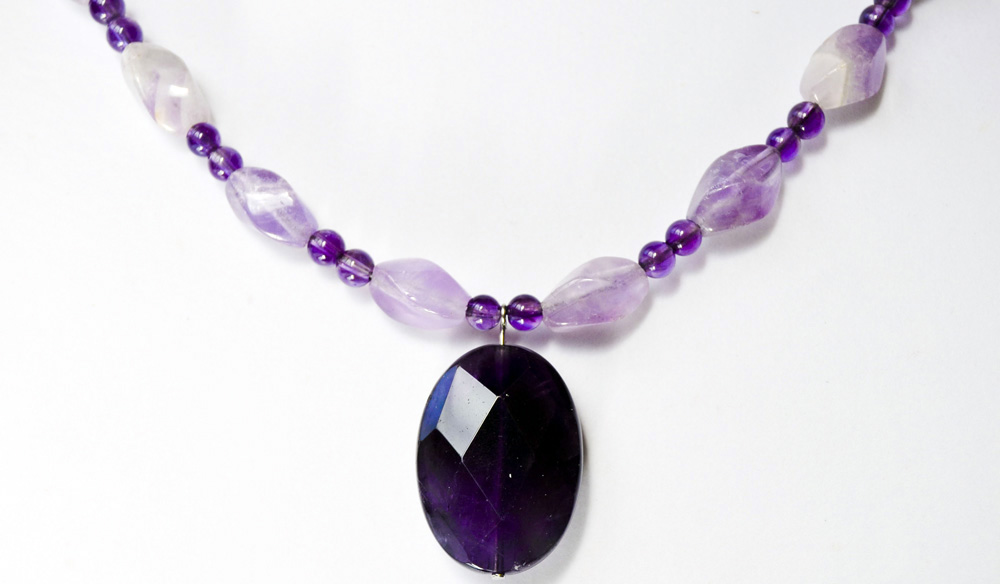Amethyst is a variety of quartz renowned for its bright, vibrant violet color. Its name translates from Koine Greek as “not drunk;” many ancient Greeks would wear the stone and carve drinking vessels from it under the superstition that the stone would protect them from excessive intoxication.
During medieval times, some soldiers would wear amethyst amulets under the belief that it could keep them level-headed and had healing properties. In ancient China, some believed the stone could ward off negative energies and act as a sort of good-luck charm. Tibetans considered Amethyst sacred to the Buddha, and would carve prayer beads from it. St. Valentine, the patron of romantic love, is alleged to have worn an amethyst ring carved in the shape of Cupid, and the gem is now used as the birthstone of February – the same month as Valentine’s Day.

While Amethyst was sought after for both its beauty and alleged supernatural properties throughout much of the world, it remained quite rare and expensive to procure until the 18th century when large deposits of the gem were discovered in Brazil.
Today, the stone is considered “semiprecious” and is both easier and more affordable to obtain than when it was considered as rare as rubies or emeralds. Deposits have been discovered in Bolivia, Uruguay, Ontario, and Zambia. Smaller deposits have also been found in parts of Afghanistan, Africa, Argentina, Mexico, Spain, the US, and South Korea. It is the official state gemstone of South Carolina.
Bolivian mines have borne unique crystals in which amethyst and citrine occur together. These yellow-purple gems are called ametrine.
Despite the decline in monetary value, amethyst remains wildly popular in jewelry pieces; while it may be easier to find than in centuries past, it is still a striking, beautifully colored stone and continues to be the most prized type of quartz.
Amethyst is most known to display its signature light lavender and deep purple colorations, but it can also show secondary hues of red and blue. It forms in hollow crystal-lined geodes – some of which are so large a full grown adult can stand upright in them – and can be found in single stones well in excess of 100 lbs, making the carat weight less distinguishing than is standard for other gems. Instead, collectors tend to look for depth of color in valuing samples of the stone, including flashes of red when it is conventionally cut.
Amethyst ranks as a 7 on the Mohs Hardness Scale, further contributing to its popularity as jewelry, and handling it with proper care should prevent damage to the stone.
